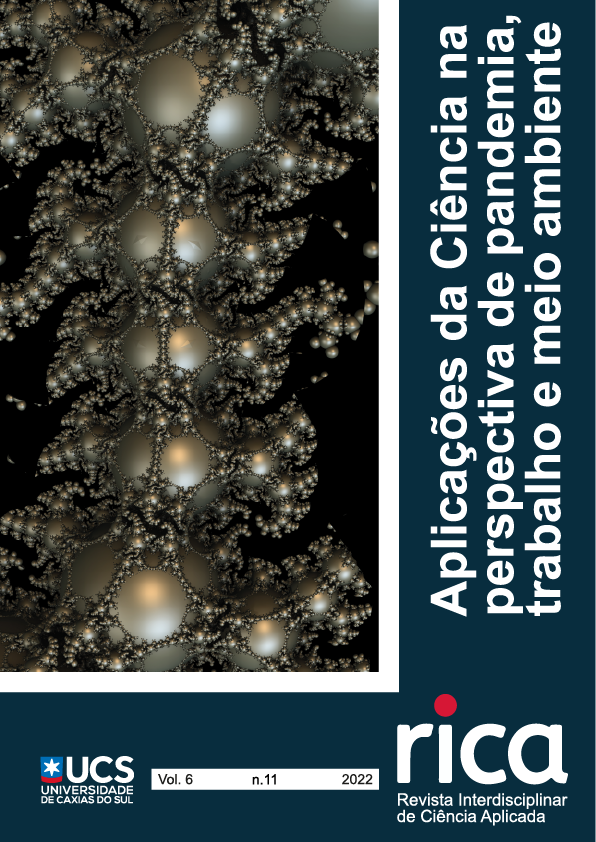Altruistic leadership and job performance: a Darwinian evolutionary perspective
DOI:
https://doi.org/10.18226/25253824.v6.n11.04Keywords:
Altruistic Leadership, Selfish Leadership, Evolutionary Biology, Path Modeling, Population GeneticsAbstract
This paper presents an altruistic leadership theory based on evolutionary concepts. The theory proposes that natural processes selected for selfish behaviors, and that these selfish behaviors continue in modern humanity. However, while these selfish tendencies provided positive survival traits among ancestral populations, they induce negative behavioral traits in modern times in most organizational situations. We argue that altruistic behavior – placing followers’ needs before one’s own – elicits increases in follower performance by increasing their commitment and job satisfaction. However, it seems that the same forces that led to the spread of selfish leadership traits among ancestral humans also inhibit the spread of altruistic leadership traits today. As such, we can expect few naturally altruistic leaders to be available, and we can also expect that organizations must nurture such behaviors to develop trained altruistic leaders. These trained altruistic leaders may have advantages if they can draw upon training to behave altruistically with followers, and selfishly to deal with external competition. We develop these ideas by presenting mechanisms for how selfish leadership traits developed and spread through ancestral humans, what role altruism plays in enhancing follower outcomes, and suggestions for future theoretical development.
References
Allio, R. J. (2018). Becoming a leader–first, take charge of your own learning process. Strategy & Leadership, 46(3), 21-28.
Atkins, P. W., & Parker, S. K. (2012). Understanding individual compassion in organizations: The role of appraisals and psychological flexibility. Academy of Management Review, 37(4), 524-546.
Boaz, N. T., & Almquist, A. J. (1997). Biological anthropology: A synthetic approach to human evolution. Upper Saddle River, NJ: Prentice Hall.
Brands, R. A., Menges, J. I., & Kilduff, M. (2015). The leader-in-social-network schema: Perceptions of network structure affect gendered attributions of charisma. Organization Science, 26(4), 1210-1225.
Burt, A. & Trivers, R. (2006). Genes in conflict: The biology of selfish genetic elements. Cambridge, MA: Harvard University Press.
Buss, D. M. (2015). Evolutionary psychology: The new science of the mind. Hove, England: Psychology Press.
Cai, G., & Kock, N. (2009). An evolutionary game theoretic perspective on e-collaboration: The collaboration effort and media relativeness. European Journal of Operational Research, 194(3), 821-833.
Cartwright, J. (2008). Evolution and human behavior: Darwinian perspectives on human nature. Cambridge, MA: The MIT Press.
Cavalli-Sforza, L. L. (2001). Genes, peoples, and languages. Berkeley, CA: University of California Press.
Cohen, J. (1988). Statistical power analysis for the behavioral sciences. Hillsdale, NJ: Lawrence Erlbaum.
Cohen, J. (1992). A power primer. Psychological Bulletin, 112(1), 155-159.
DeRue, D. S., Nahrgang, J. D., & Ashford, S. J. (2015). Interpersonal perceptions and the emergence of leadership structures in groups: A network perspective. Organization Science, 26(4), 1192-1209.
Dietz, M. G. (1986). Trapping the Prince: Machiavelli and the politics of deception. American Political Science Review, 80(3), 777-799.
Dionne, S. D., Yammarino, F. J., Atwater, L. E., & Spangler, W. D. (2004). Transformational leadership and team performance. Journal of Organizational Change Management, 17(2), 177-193.
Dixon, S. (1985). The marriage alliance in the Roman elite. Journal of Family History, 10(4), 353-378.
Dunbar, R. I. M. (1998). Grooming, gossip, and the evolution of language. Cambridge, MA: Harvard University Press.
Gilbert, P. (2001). Evolution and social anxiety. Psychiatric Clinics, 24(4), 723-751.
Gillespie, J.H. (2004). Population genetics. Baltimore, MD: The Johns Hopkins University Press.
Hartl, D. L., & Clark, A. G. (2007). Principles of population genetics. Sunderland, MA: Sinauer Associates.
Hayano, D. M. (1974). Marriage, alliance, and warfare: A view from the New Guinea Highlands. American Ethnologist, 1(2), 281-293.
Joshi, A., Lazarova, M. B., & Liao, H. (2009). Getting everyone on board: The role of inspirational leadership in geographically dispersed teams. Organization Science, 20(1), 240-252.
Kock, N. (2004). The psychobiological model: Towards a new theory of computer-mediated communication based on Darwinian evolution. Organization Science, 15(3), 327-348.
Kock, N. (2009). Information systems theorizing based on evolutionary psychology: An interdisciplinary review and theory integration framework. MIS Quarterly, 33(2), 395-418.
Kock, N. (2011). A mathematical analysis of the evolution of human mate choice traits: Implications for evolutionary psychologists. Journal of Evolutionary Psychology, 9(3), 219-247.
Kock, N. (2015). Wheat flour versus rice consumption and vascular diseases: Evidence from the China Study II data. Cliodynamics, 6(2), 130–146.
Kock, N., & Lynn, G. S. (2012). Lateral collinearity and misleading results in variance-based SEM: An illustration and recommendations. Journal of the Association for Information Systems, 13(7), 546-580.
Lawrence, P. R., & Pirson, M. (2015). Economistic and humanistic narratives of leadership in the age of globality: Toward a renewed Darwinian theory of leadership. Journal of Business Ethics, 128(2), 383-394.
Lok, P., & Crawford, J. (2004). The effect of organisational culture and leadership style on job satisfaction and organisational commitment: A cross‐national comparison. Journal of Management Development, 23(4), 321–338.
Marinova, S. V., Moon, H., & Kamdar, D. (2013). Getting ahead or getting along? The two-facet conceptualization of conscientiousness and leadership emergence. Organization Science, 24(4), 1257-1276.
Mayfield, J., & Mayfield, M. (2017). Motivating language theory: Effective leader talk in the workplace. New York, NY: Springer.
Mayfield, J., Mayfield, M., & Kopf, J. (1995). Motivating language: Exploring theory with scale development. Journal of Business Communication, 32(4), 329-344.
Mayfield, J., Mayfield, M., & Kopf, J. (1998). The effects of leader motivating language on subordinate performance and satisfaction. Human Resource Management, 37(3‐4), 235-248.
Maynard Smith, J. (1998). Evolutionary genetics. New York, NY: Oxford University Press.
Maynard Smith, J., & Harper, D. (2003). Animal signals. New York, NY: Oxford University Press.
McElreath, R., & Boyd, R. (2007). Mathematical models of social evolution: A guide for the perplexed. Chicago, IL: The University of Chicago Press.
Meyer, J. P., Stanley, D. J., Herscovitch, L., & Topolnytsky, L. (2002). Affective, continuance, and normative commitment to the organization: A meta-analysis of antecedents, correlates, and consequences. Journal of Vocational Behavior, 61(1), 20–52.
Miller, G. F. (2000). The mating mind: How sexual choice shaped the evolution of human nature. New York, NY: Doubleday.
Milton, K. (1999). A hypothesis to explain the role of meat-eating in human evolution. Evolutionary Anthropology Issues News and Reviews, 8(1), 11-21.
Nicholson, N. (2005). Objections to evolutionary psychology: Reflections, implications and the leadership exemplar. Human Relations, 58(3), 393-409.
Pauchant, T. C. (2005). Integral leadership: A research proposal. Journal of Organizational Change Management, 18(3), 211-229.
Pierce, B. D., & White, R. (1999). The evolution of social structure: Why biology matters. Academy of Management Review, 24(4), 843-853.
Rice, S. H. (2004). Evolutionary theory: Mathematical and conceptual foundations. Sunderland, MA: Sinauer Associates.
Richards, M. P., Schulting, R. J., & Hedges, R. E. (2003). Archaeology: Sharp shift in diet at onset of Neolithic. Nature, 425(6956), 366-366.
Riketta, M. (2002). Attitudinal organizational commitment and job performance: a meta-analysis. Journal of Organizational Behavior, 23(3), 257–266.
Rippin, A. (2007). Stitching up the leader: empirically based reflections on leadership and gender. Journal of Organizational Change Management, 20(2), 209-226.
Robert, C., & Casella, G. (2013). Monte Carlo statistical methods. New York, NY: Springer.
Schneier, F. R. (2003). Social anxiety disorder: Is common, underdiagnosed, impairing, and treatable. British Medical Journal, 327(7414), 515.
Shamir, B., House, R. J., & Arthur, M. B. (1993). The motivational effects of charismatic leadership: A self-concept based theory. Organization Science, 4(4), 577-594.
Slantchev, B. L. (2004). How initiators end their wars: The duration of warfare and the terms of peace. American Journal of Political Science, 48(4), 813-829.
Spisak, B. R., O'Brien, M. J., Nicholson, N., & van Vugt, M. (2015). Niche construction and the evolution of leadership. Academy of Management Review, 40(2), 291-306.
Sposato, M. (2019). Understanding paternalistic leadership: A guide for managers considering foreign assignments. Strategy & Leadership, 47(5), 47-52.
Stanford, C. B. (1999). The hunting apes: Meat eating and the origins of human behavior. Princeton, NJ: Princeton University Press.
Taneyhill, D. E., Dunn, A. M., & Hatcher, M. J. (1999). The Galton–Watson branching process as a quantitative tool in parasitology. Parasitology Today, 15(4), 159-165.
Trivers, R. (2000). The elements of a scientific theory of self‐deception. Annals of the New York Academy of Sciences, 907(1), 114-131.
Trivers, R. (2002). Natural selection and social theory. Oxford, England: Oxford University Press.
Wilson, E.O. (2000). Sociobiology: The new synthesis. Cambridge, MA: Harvard University Press.
Wright, S. (1934). The method of path coefficients. The Annals of Mathematical Statistics, 5(3), 161-215.
Wright, S. (1960). Path coefficients and path regressions: Alternative or complementary concepts? Biometrics, 16(2), 189-202.
Zahavi, A. (1975). Mate selection—A selection for a handicap. Journal of Theoretical Biology, 53(1), 205-214.
Zahavi, A., & Zahavi, A. (1997). The Handicap Principle: A missing piece of Darwin’s puzzle. Oxford, England: Oxford University Press.
Downloads
Published
How to Cite
Issue
Section
License
Copyright (c) 2022 Ned Kock, Milton Mayfield, Jacqueline Mayfield

This work is licensed under a Creative Commons Attribution 4.0 International License.
Authors keep the copyright and cede to the journal the right of publishing first. Published works are licensed under a Creative Commons Attribution 4.0 International (CC BY 4.0) license, allowing the sharing of the work with recognition of the authorship and initial publication in this journal.






